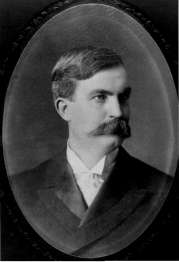| Shipman v Graves, 41 Mich 675; 3 NW 177 (21 Oct 1879)
Detroit & T S L R Co v Campbell, 140 Mich 384; 103 NW 856 (8 June 1905)
American Tobacco Co v Globe Tobacco Co, 193 F 1015 (D Mich, 2 Dec 1911) (unfair business practices case)
People v Blumerich, 183 Mich 133; 149 NW 1040 (18 Dec 1914)
Haller v City of Lansing, 195 Mich 753; 162 NW 335; LRA 1917E, 324 (9 April 1917) (worker compensation case)
Schwartz v Michigan Warehouse Co, 219 Mich 401; 189 NW 1 (20 July 1922)
Tanton v McKenney, 226 Mich 245; 197 NW 510; 33 ALR 1175 (24 March 1924) (student expelled from teaching college, due to tobacco addiction; smoking was already a known brain damage matter, and students in that era were being taught about tobacco's adverse effects. A smoking teacher would set a bad example and undermine teaching on-point.)
People v Asta, 337 Mich 590; 60 NW2d 472 (5 Oct 1953) (licensing aspects case)
People v Locricchio, 342 Mich 210; 69 NW2d 723 (14 April 1955) (licensing aspects case)
Konieczka v Mt. Clemens Metal Products Co 360 Mich 500; 104 NW2d 202 (11July 1960)
Foster v City of Detroit, 56 Mich App 644; 224 NW2d 714 (26 Nov 1974, lv app den 19 Feb 1975)
Opinions of Attorney General 1977-78, No. 5202 (11 July 1977) (school smoking issues) (Search AG Opinions.)
Matter of Evelyn Bertram, Case No. A9-190131 (29 Dec 1977) (worker compensation case)
Jacobs v Michigan State Mental Health Dep't, 88 Mich App 503; 276 NW2d 627 (6 Feb 1979) (mentally ill smoker case)
Kingery v Ford Motor Co, 116 Mich App 606; 323 NW2d 318 (16 April 1982)
People v Hudgins, 125 Mich App 140; 336 NW2d 241 (20 April 1983)
Cooper v Chrysler Corp, 125 Mich App 811; 336 NW2d 877 (18 May 1983)
Lauren Hall v Sisters of Mercy Health Corp, Deaconess Hospital, # 80-031-746 (Wayne County Circuit Court, 2 Oct 1983) (employee request for smokefree workplace)
Brisboy v Fibreboard Corp, 148 Mich App 298; 384 NW2d 39 (24 Oct 1985)
Checker Motors Co v Int'l Union, Allied Industrial Workers of America, Local No. 682, AFL-CIO, 86-2 Lab Arb Awards (CCH) § 8612 (11 Aug 1986)
Hall v Veterans Administration, EEOC No. 054-086-X0097 (Mich, 5 Sep 1986) (employee request for smoke-free workplace)
Perkins v Ford Motor Co, et al., Civ No. 86-633018-CZ (Wayne Cty Cir Ct, 25 Nov 1986) (injunction for smoke-free workplace)
Opinions of Attorney General 1987-1988, No. 6460, pp 167-171; 1987 Michigan Register 366 (25 Aug 1987) (placing nonsmokers "checkerboard style" [segregated] does not achieve law compliance, an Alford-style unconstitutionality analysis, as the benefit of safety is intended, and cannot legally be segregated away) (Search AG Opinions.)
Brisboy v Fibreboard Corp, 429 Mich 540; 418 NW2d 650 (25 Jan 1988)
Michigan Bell Telephone Co v Communciation Workers of America, 90 Lab Arb (BNA) 1186 (3 May 1988) (smoking-on-job case)
Opinions of Attorney General 1987-1988, No. 6519, pp 327-330; 1988 Mich Register 80 (31 May 1988) (racetrack grandstand case) (Search AG Opinions.)
Besser Co v United Steelworkers of America, Local 209, 89-1 Lab Arb Awards (CCH) § 8150 (23 June 1988)
Acorn Building Components, Inc v Local 2194, Int'l Union, UAW, 89-1 Lab Arb Awards (CCH) § 8243 (15 Nov 1988)
Potter v Potter, Lawyer's Weekly No. MA-2953, 3 Mich Law Weekly 1468 (1989) (custody case)
Lauren Hall v Veterans' Admin, Civ Action No. 88-71102 (D ED Mich, 12 July 1990) (re employee request for smokefree workplace)
MacDonald v Michigan State of Bureaucracy, 911 F2d 733 (CA 6, WD Mich, 23 Aug 1990) (smoker job-rights case)
Opinions of Attorney General 1989-90, No. 6665 (15 Nov 1990) (Authority to regulate or prohibit the placement of cigarette vending machines; and affirming that the public health code does in fact grant local health departments the power to enact local ordinances stronger than state law for the protection of public health)
(Search AG Opinions.)
Bryant/Dept of Social Services v Wakely, Appeal No. 131708 (Mich App, 13 June 1991) (custody case)
Lauren Hall v Veterans' Administration, 946 F2d 895 (CA 6, 28 Oct 1991) (smoke-free workplace case)
Bradley v Philip Morris, Inc, 194 Mich App 44; 486 NW2d 48 (29 Oct 1991) (business practices case)
Opinions of Attorney General 1991-1992, No. 6719; 1992 Michigan Register 177 (4 May 1992) (issue of nonsmoker only apartment complex) (Search AG Opinions.)
Hall v Turnage, 504 US 958; 112 S Ct 2310; 119 L Ed 2d 231 (1 June 1992) (smoke-free workplace case)
Bradley v Philip Morris, Inc, 440 Mich 870; 486 NW2d 737 (15 July 1992)
Bradley v Philip Morris, Inc, 199 Mich App 194; 501 NW2d 246 (5 April 1993)
Bradley v Philip Morris, Inc, 444 Mich App 644; 513 NW2d 797 (1 March 1994)
Stevens v Inland Waters, Inc, 220 Mich App 212; 559 NW2d 61 (22 Nov 1996) (on firing smokers; smoking is not a protected 'handicap') [smoking is a dangerous mental disorder with a bad reputation; in law, dangerousness is a violation, not a protected activity, see details including anti-murder precedents, universal malice, and the doctrines of 'transferred intent' and 'taking victims as they come']
Taylor v American Tobacco Co, Inc, 983 F Supp 686 (ED Mich, 3 Nov 1997) (dangerous tobacco case)
Taylor v American Tobacco Co, et al, Civil No. 97 715975 NP (CA 3, Judge William J. Giovan, 11 Jan 2000) (dangerous tobacco case filed by persons illegally sold cigarettes in violation of Michigan law). SCB: 983 F Supp 686
Mich. Restaurant Ass'n, et al v City of Marquette, 245 Mich App 63; 626 NW2d 418 (13 March 2001) [See Grand Rapids Press Editorial; and Well-Reasoned Pure Air Precedents]
Reilly v Grayson, 157 F Supp 2d 762 (ED MI, 22 June 2001) (smoke free air, prison case)
Booth v R. J. Reynolds Tobacco Co, et al., 2001 WL 1837830; Prod Liab Rep (CCH) P 16,265 (WD Mich, 20 Nov 2001)
Wayne County v Philip Morris Inc, et al., ___ Mich ___; ___ NW2d ___ (30 Jan 2002) (News Article; taxpayer health-care cost recovery case)
Zimmerman v Department of Corrections, 2002 Mich App LEXIS 1419; 2002 Mich App LEXIS 31310162 (Mich App, 15 Oct 2002) (government employee effort to obtain the right to pure air, as would be automatic if Michigan's cigarette manufacturing/selling ban law were being obeyed and enforced))
Jamie Reilly v [State of Michigan] Henry Grayson, Chris Daniels, and Joseph Cross, Case Nos. 01-1993/2189; 2002 FED App 0397P (CA 6); 310 F3d 519 (CA 6, 18 Nov 2002). SCB: 157 F Supp 2d 762 (smoke free air, prison case)
People v Paul E. Renwick (Macomb Cnty Circ. Ct., Mich., 28 September 2006) (conviction for causing fatal fire)
People v Beydoun, 283 Mich App 314 (14 April 2009) (cigarette tax evasion case)
Foucault-Funke American Legion Post 444 v Guy St. Germain, Exec Dir of the Western Upper Peninsula Health Dept and the Western Upper Peninsula Health Dept (File No. 10-6062-CZ, Circ. Ct., Baraga County, filed 6 August 2010) (See rebuttal; and preliminary injunction issued ordering immediate compliance pending final adjudication of the smoke-free law, 15 October 2010). For the Michigan Department of Community Health Motion that had given rise to this Court Order, click here. The Final Order issued 23 December 2010, upheld the MI smoke-free law. See, e.g., "UP tavern loses bid to defy state's public smoking ban" (Detroit Free Press, 28 Dec 2010), and "Ruling on American Legion Smoking Ban" (Upper Michigan Source, 28 Dec 2010).
|  100th Anniversary
100th Anniversary 

